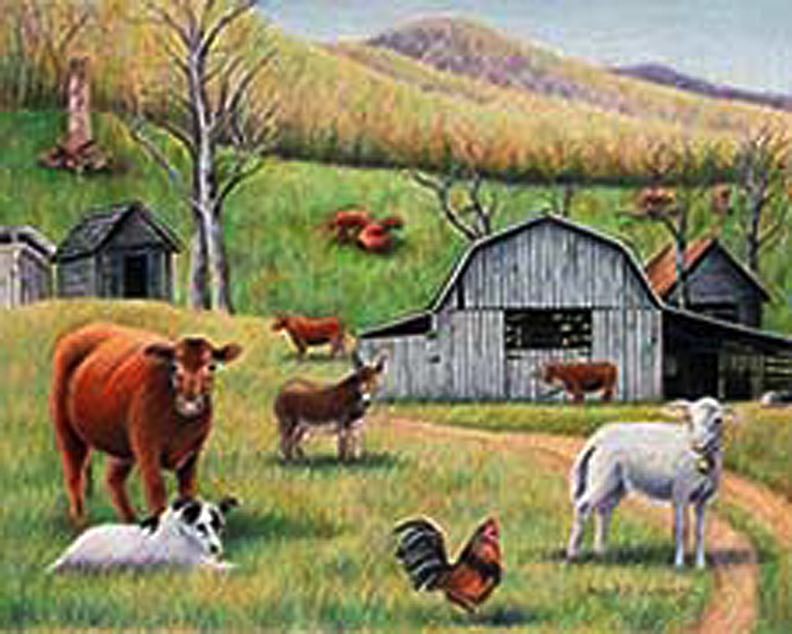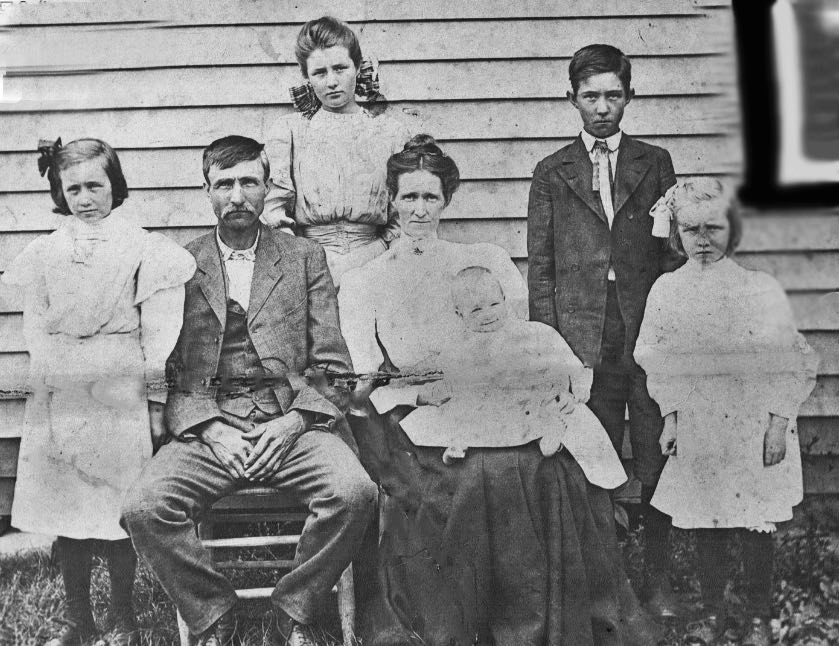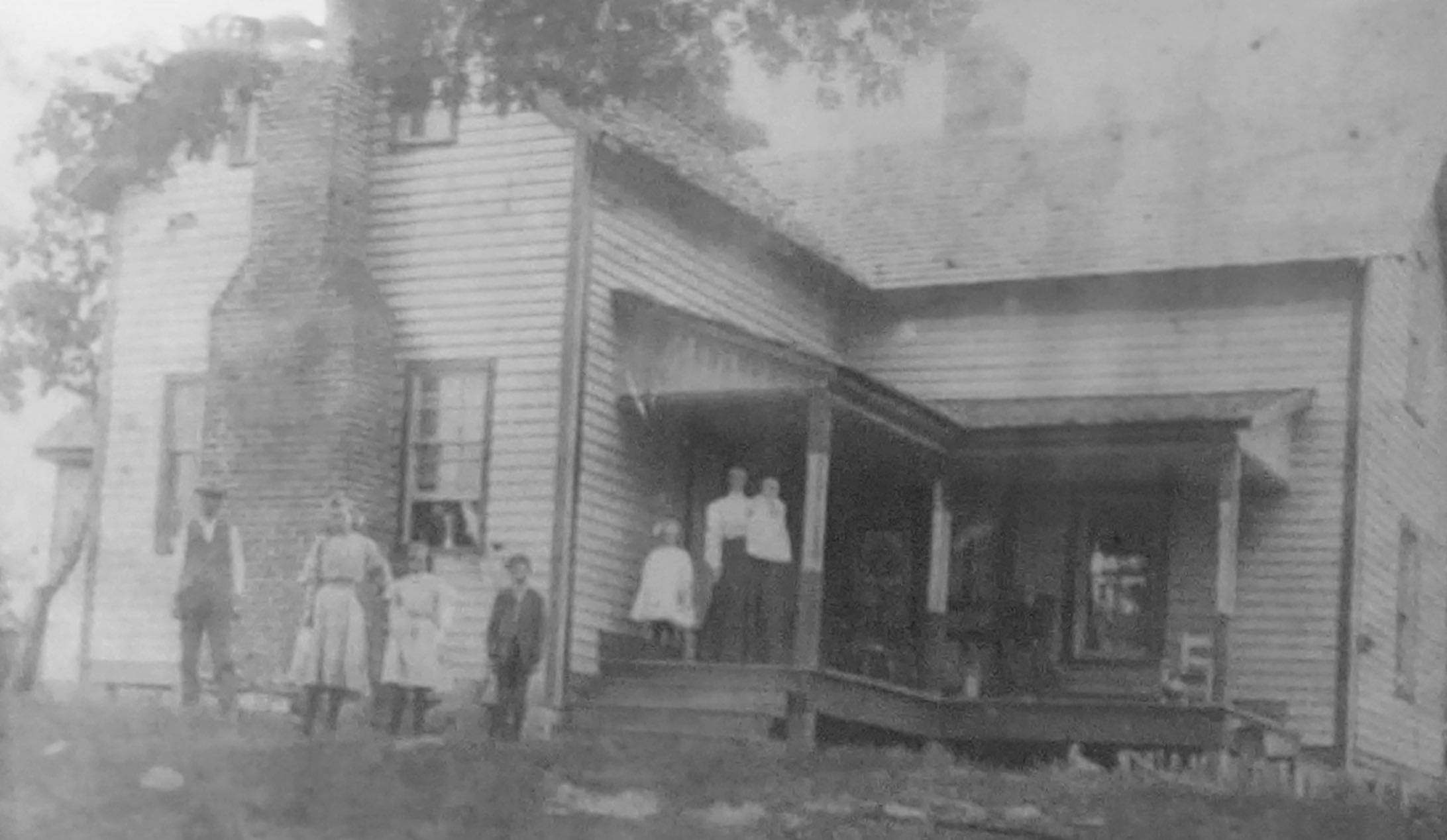Lenoir's Creek Farm
Descending from some of North Carolina’s most prominent citizens, the Lenoir family in Haywood County claimed ancestral ties to locations named for them: Avery County and the city/county of Lenoir. Thomas and Selina Louisa Avery Lenoir settled the land in 1806 and began a farm in 1807 that continues until today. Thomas was elected to the legislature and eventually amassed approximately 4,000 acres on the East Fork of the Pigeon River. The Lenoir’s slave-holding grew to 35. The family returned to Lenoir, but youngest son, Thomas Isaac Lenoir, returned to continue the farm and established a herd of Red Devon cattle by the mid-1850s. He married Mary Elizabeth Garrett, and they had three daughters and a son (died in infancy). During the Civil War Thomas Isaac was Captain of “the Highlanders," the NC 25th Infantry Regiment, Company F. BRCO Placed its third local historic marker at the farm. To learn more about the Lenoir family and Lenoir’s Creek Farm see Legends, Tales & History of Cold Mountain, Book 3. See also Walking in the Footsteps of Those Who Came Before Us DVD and Cold Mountain Heritage Driving Tour CD. BRCO's Historic Preservation Committee placed its third local historic marker at Lenoir's Creek Farm.





Lake Logan/Sunburst
Since 2000, Camp Henry and the Lake Logan Conference Center, owned by the Episcopal Diocese of Western North Carolina, have been located near the site of the original Sunburst Village. Developed on Bethel's West Fork of the Pigeon River, Sunburst Logging Village existed from the early 1900s until 1925 when a devastating fire burned the operation to the ground. This logging/sawmill community at one time numbered approximately 500 individuals, making it one of the largest logging operations to have existed in the area. In 1932, Champion Paper and Fiber Company covered the former thriving settlement with the waters of Lake Logan. Sunburst Village is commemorated with a state historic marker. Bethel Rural Community Organization's Historic Preservation Committee produced the Sunburst and Other Logging Operations of Bethel DVD for which it received the 2020 "Award of Excellence" from the NC Society of Historians . For more information about Sunburst see Legends, Tales & History of Cold Mountain, Book 4, and Cold Mountain Heritage Driving Tour CD.
Joshua and Adeline Kinsland House
The three-story Greek Revival style house dates to the early 1860s when Joshua Kinsland returned from the Civil War to oversee Dred Blaylock’s construction of the home. Joshua and his first wife Mary had nine children. Joshua built the house for his second wife Adeline, and he and Adeline had one son, John Wesley “Dubb” Kinsland, to whom the house was deeded in 1899. Essie Mason Cogburn, a widow with four daughters, married Dubb Kinsland in 1934. They had one daughter. Dubb Kinsland was an important member of the local Masonic Lodge, and he was overseer of his daughters who worked the land. After Dubb and Essie passed, two of the unwed daughters remained to care for the house until their deaths. The house remains in the hands of Kinsland family descendants. For more information about the Kinsland family and house see Legends, Tales & History of Cold Mountain, Book 6.

Idle Hour Summer Home (Hotel)
Idle Hour, referenced as both a hotel and a summer home, existed in Bethel Community as early as 1907 and as late as 1919 (according to available documentation). Newspaper clippings list the owner/manager in 1907 as Mrs. C. J. Jeffress, and advertising indicates that J.W. (Jeptha Wilson) Morgan was owner in 1916. A letter addressed from C.M. Beall to Miss Nina Morgan at Idle Hour Summer Home is dated 1919. The resort was situated approximately 3 ½ miles from Canton in the vicinity of today's Evan's Cove Road. Dancing and games, music and singing occupied the guests who came from as far away as New Orleans and Charlotte. Following is a description of amenities in a July 30, 1916, Asheville newspaper:
Boarders Wanted – Spend your vacation at the New Idle Hour summer home; newly
furnished throughout with modern conveniences; large airy rooms; hot and cold water;
excellent table and ideal home on the farm. Conveniently located on an elevation in a large oak grove, in the beautiful Pigeon river valley; only 3-4 mile from a railroad station;
20 miles from Asheville, N.C., and 7 miles from Waynesville. Fine mountain scenery. Fishing and bathing in the beautiful Pigeon river, running through premises. Rates
reasonable. Address, J.W. Morgan, Canton R.F.D.2. N.C.
Bascombe and Anna Elizabeth Cathey Justice House
Alma Elizabeth Cathey and George Bascombe Justice married on April 7, 1880, and they built the one and one-half story frame vernacular Victorian Folk style house on one hundred and sixty-five acres. They reared three sons and four daughters in the house, and the family resided there until 1991 when the house fell into disrepair and declined to its present 1.6 acres. An original porch had a turned post and railing that will be added by property owners, Will and Lori Thompsen, who purchased the home in 2016. The house and property are now protected as historically and architecturally significant by Preservation NC under a preservation easement.
The Justice House is the only house in Bethel, and only the second in Haywood County, to be honored with a plaque denoting conservation easement protection from the Historic Preservation Foundation of North Carolina.




Stephen Rawson and Marion Bodwell Lesher Cabin
Stephen Rawson and Marion Bodwell Lesher built their cabin home on Little East Fork in Cecil Township soon after their marriage on June 22, 1921, on land owned by Arthur Lesher, Stephen's father. Arthur Lesher was a prominent businessman in the Broadway, New York, textile industry. Stephen's wife, Marion, descended from Maine's Sanford Mills family. Stephen steered away from the family textile business and his Harvard education to become a farmer and stock-raiser in rural Bethel Community.
An inherited painting of the Little East Fork cabin led Charles Leighton, grandson of Stephen and Marion, to explore the location of his grandparents' first dwelling. Investigation by the Historic Preservation Committee revealed that the cabin had been dismantled by the current owner. The location of the site, however, was discovered, allowing the committee to resolve Leighton's search for the long-ago cabin that played a significant role in his family's history.



The 1856 David and Rebecca Anderson Mann/Ira Pryne and Mary Elizabeth Murray Mann House appears to be older than the 1860 Joseph Turner and Martha Anna Iva Killian Cathey House on Highway #110 – previously considered to be the oldest standing frame house in Bethel.
Widower David Mann built the house and moved in with his second wife, Rebecca Anderson Mann. Doris Rollins Cannon and her brother, Steve Rollins, grew up in the house with her parents, C.S. Rollins and Lela Mann Rollins while also sharing the place with her grandparents, Ira P. and Mary Elizabeth Murray Mann. Ira Mann, previously a Montana cowboy, was a farmer, a Mason, a member of the local board of education, and served as a volunteer undertaker. Ira and Mary Elizabeth were faithful members of Bethel Presbyterian Church. Only once did Ira have dissent with his Presbyterian Church. He was a staunch Republican, and when he saw a picture of Democratic President Woodrow Wilson hanging on the church wall, he left church complaining that he had come to church to worship God – not Woodrow Wilson. Known for his gruffness and his propensity to leave home for days at a time, Ira Mann did have redeeming qualities, according to Cannon: patiently reading to her and cutting pieces of apple with his pocketknife for her to eat.
Information about Mann family history, written by Doris Rollins Cannon, is from My Children's Children: The Murray Clan by Frances Blalock Denton.

Local historic marker placed at Lenoir’s Creek Farm by BRCO’s Historic Preservation Committee


David and Rebecca Anderson Mann/Ira Pryne and Mary Elizabeth Murray Mann House

